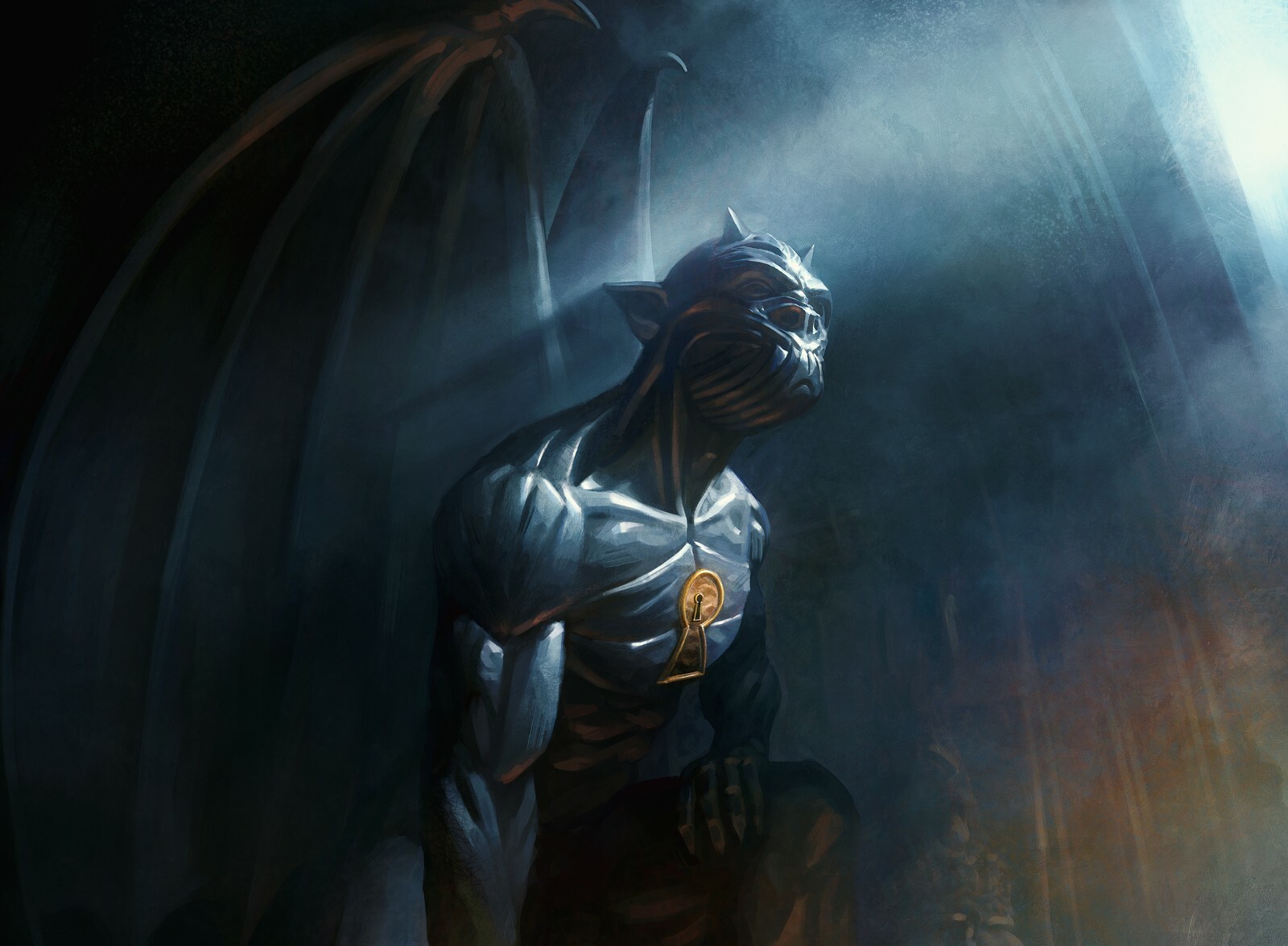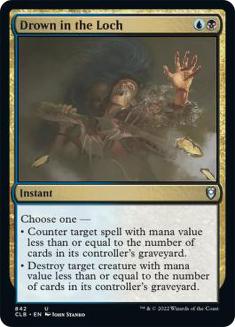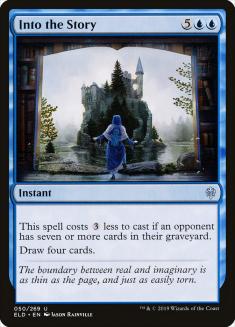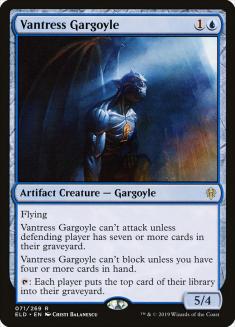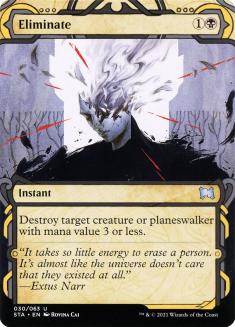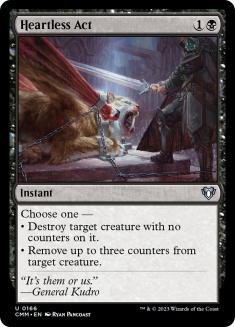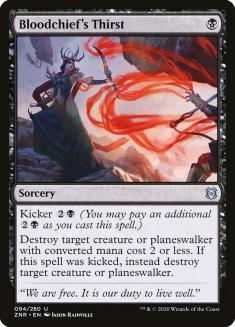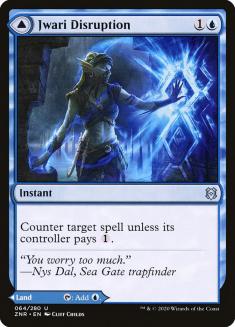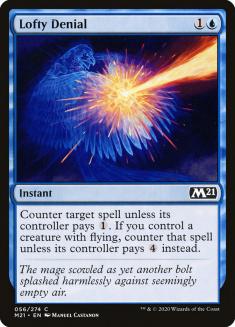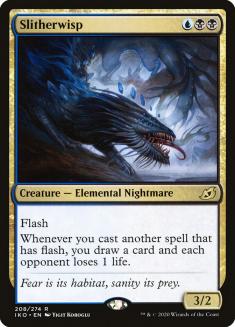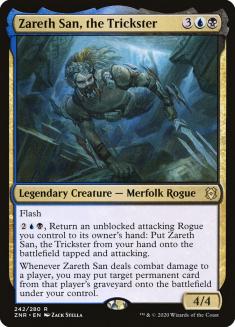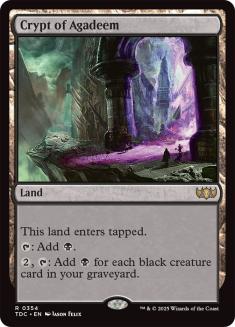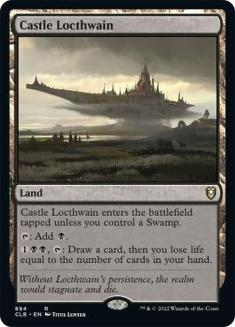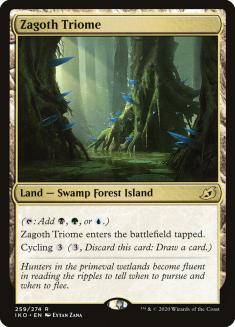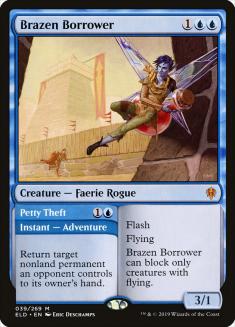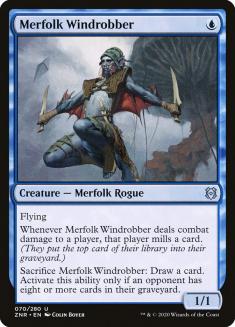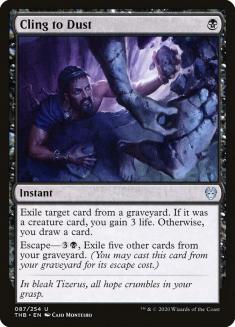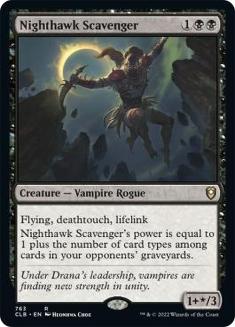When Zendikar Rising first came out, my instinct was to build a very Rogues-focused Dimir Rogues deck. It makes a lot of sense — Wizards of the Coast (WotC) has been pushing their mechanics really hard and many of the best decks in the past couple of years have been made by just throwing together every card with the right keyword. For example, most Food builds were simply grouping together every Food card with a semblance of Constructed playability, and decks like Zombies, Energy, and Vehicles weren’t much different. As such, it follows logically that the best Dimir Rogues deck would just include a bunch of cards with the word “Rogue” on them.
Alas, this doesn’t seem to be the case here. Many of the original Dimir Rogues builds fell flat because they were too focused on Rogues, and that left them being just creature decks that weren’t good enough at being creature decks. Basically, we were playing Merfolk, and I don’t think Merfolk is usually a strong archetype.
As time passed, it dawned on me that the approach wasn’t necessarily wrong. WotC did push a mechanic very hard, but this mechanic just wasn’t Rogues; it was “milling.”
Once you look at the deck as “Dimir Mill” rather than Dimir Rogues, your approach changes and the deck becomes much better, an approach that’s only possible given the Uro, Titan of Nature’s Wrath ban. You still play a lot of Rogues, since they’re the best milling enablers, so it’s still a Rogues deck, but it can play a much more control role than the original versions I was playing and I think it’s much better for it, since the opponent can no longer just flood their deck with removal spells and expect to win by killing all your creatures, which they definitely could do before.
For example, let’s take a look at the deck that won the CFB Clash Qualifier:
Creatures (22)
- 4 Brazen Borrower
- 4 Thieves' Guild Enforcer
- 4 Merfolk Windrobber
- 3 Zareth San, the Trickster
- 3 Nighthawk Scavenger
- 4 Soaring Thought-Thief
Lands (16)
Spells (22)
Sideboard

This deck is still very Rogue-centric, but it also plays a lot of control elements. It has four Heartless Act, four Drown in the Loch, four Lofty Denial, and three Into the Story. It doesn’t play cards like Rankle, Master of Pranks while also not maxing on Zareth San, the Trickster and Nighthawk Scavenger.
Drown in the Loch and Into the Story are insanely powerful cards if you’re consistently enabling them, and alongside the extra pieces of removal and disruption they facilitate a control gameplan that can be played next to the aggression from Rogues. So I would argue that, even though this is very much a Rogues deck, the Rogues are mostly used as enablers, and Into the Story and Drown in the Loch are the payouts.
Going a bit further in this regard than this, there’s a version that I really like from Rage_HS that incorporates Vantress Gargoyle. Vantress Gargoyle isn’t a Rogue, yet fits thematically into the deck very well — it’s an excellent blocker early-game, it mills them without having to attack to turn on your Drown in the Lochs and Into the Stories, and it can kill them quite quickly once you gain control of the game, so it plays on all possible angles on which the deck operates. On top of all that, it’s excellent with Agadeem’s Awakening, as it both fuels it through milling your own library and is also a strong late-game card to return. Here’s Rage’s latest list:
Creatures (24)
- 4 Vantress Gargoyle
- 4 Brazen Borrower
- 4 Slitherwisp
- 4 Thieves' Guild Enforcer
- 4 Merfolk Windrobber
- 4 Soaring Thought-Thief
Lands (20)
Spells (16)

Now let’s go over some of the individual card choices:
Eliminate VS Heartless Act VS Bloodchief’s Thirst
Of the three removal spells, I think Eliminate is clearly the worst — there are no planeswalkers worth killing in this format and failures to kill Omnath, Locus of Creation; Zareth San, the Trickster; Kenrith, the Returned King; and Bonecrusher Giant are deal-breakers for me. The only reason I’m even including it in the comparison is that I’ve seen lists that play maindeck Eliminates.
Between Bloodchief’s Thirst and Heartless Act, the comparison is closer. This deck can play reasonably well at instant speed, so having your removal spell be an instant is huge, and I think that pushes Heartless Act over the top for me. The way I see it, the only matchup where Bloodchief’s Thirst is better than Heartless Act is Mono-Green Aggro, because Scavenging Ooze and Stonecoil Serpent can be some of their best cards and Heartless Act can struggle against those, but being able to kill Zareth San in combat or an Omnath with the trigger on the stack is currently more important than dealing with Scavenging Ooze, to a point where I’d play four Heartless Acts before the first Bloodchief’s Thirst.
Jwari Disruption VS Lofty Denial VS Mystical Dispute
I’m not a huge fan of Jwari Disruption in this deck, as it’s often trying to curve out and having a tapped land is not the best. Plus, the card isn’t that strong on power level alone (both sides being bad late-game is a real faux pas for a DFC), and in this deck they’re incentivized to play around it because of Lofty Denial anyway, so you’re not utilizing it to its fullest potential.
Both the remaining cards can be good in different situations, and I think it’s reasonable to play a mix in your maindeck. Lofty Denial is particularly good on the play, since it lets you answer Lucky Clover and Lotus Cobra whereas Mystical Dispute doesn’t, but overall I’m partial to Dispute because of sideboarded games. In Game 1, I think you have plenty of flyers to turn on Lofty Denial’s “kicker,” but I routinely sideboard out Merfolk Windrobber and Brazen Borrower, so the density of flyers you get in sideboarded games is much lower (on top of people having more removal), which leads to having to sideboard out Lofty Denial as well.
Slitherwisp VS Into the Story VS Zareth San
The biggest question you need to answer with any deck that is trying to one-for-one the opponent is, “How do I get ahead?” Dimir Rogues is definitely such a deck — its spells may be cheaper than whatever they’re answering, so you’re going to be ahead on mana, but they’re still all one-for-one in the cards department, so you need something to get ahead in the game.
Rage likes Slitherwisp in his deck, but I tried the card for a while and ultimately I came to the same conclusions that Sam Black did — it just dies too easily to Bonecrusher Giant and the manabase to make it work isn’t trivial. It’s going to be your best card in some spots, but I think you need your late-game banger to be a little more reliable. Slitherwisp is more about getting a one-card advantage than completely running away with the game in this deck.
This leaves Into the Story and Zareth San. They’re completely different cards but end up serving similar roles — they both let you actually win a game after stopping your opponent from doing what they’re doing. Zareth San is the more “tempo-oriented” version of this; have a Zareth San on the battlefield and you only need to stall your opponent for, say, two more turns before your advantage becomes overwhelming whereas Into the Story is the more patient “I’m going to establish total control and answer everything that you have for the rest of the game” approach.
Personally, I’ve liked a mix of them, but with a nod to Into the Story. Zareth San is still good to close out the game, and a nice way to punish people who tap out, but it has real diminishing returns, it’s weak to Brazen Borrower and to Heartless Act, and it’s the kind of card that tends to get crowded in your hand if you have too many. Into the Story is also awkward sometimes, since it’s not a given that they will have seven cards in the graveyard, but I’ve found it to be awkward in less spots than Zareth San. Besides, I tend to sideboard out a lot of Rogues in many matchups, which also makes it worse.
The Manabase
One of the biggest issues I have with the regular Dimir Rogues decklists is that they simply don’t play enough lands. The list that won the qualifier, for example, plays twenty lands and three DFCs. I think 23 lands is already not enough by itself, and the deck should use the DFCs as an opportunity to play more lands than it normally can rather than fewer. Agadeem’s Awakening is a card that you actually want to cast semi-often, and if you play this few lands, you basically never can. Throw utility lands like Zagoth Triome and Castle Locthwain (or even Castle Vantress in this version) into the mix and I think 23 is way too few. I’d try to play 25.
As for which lands, I think you should just bite the bullet and play four Agadeem’s Awakening. It’s just a very strong card, especially when other people are playing Rogues as well and milling you so much. Past that, I think Temples and Pathways are the obvious best, and then I like some number of Triomes over Fabled Passages. I’m not a huge fan of playing a lot of Castles in this deck, since I think having lands enter the battlefield tapped is a huge issue and with a ton of Into the Stories and Agadeem’s Awakenings you have enough mana sinks, but if you do want to play a lot of Castles then I’d consider Triomes over Temples.
The Sideboard
Sideboarding with Dimir Rogues is not very intuitive, because it’s usually about having a direction for your deck. This is a synergy-type deck, which means you need to either sideboard minimally as to maintain the synergies you have in your maindeck or you need to sideboard a lot to create a new gameplan.
For example, I think that, versus aggressive decks, your plan should be to turn into a control deck. This can mean cutting down on Merfolk Windrobber and potentially even Brazen Borrower and bringing in a lot of removal and cards like Into the Story. In our case, Into the Story is already in our deck, but some people play Into the Story in the sideboard and then they need to bring it in because it’s part of the plan versus aggro (even if it’s not traditionally a card that you have versus aggro at all!). In fact, I’ve seen people who maindeck Into the Story and then sideboard it out versus aggro decks. If you do that, then your deck will become a bit disconnected — you will have all the one-for-one answers in the world, but no way to pull ahead.
One individual choice I feel very strongly about is that I would rather have counterspells than discard spells. I see a ton of people playing Duress in their Dimir Rogues sideboard and I just don’t think that fits the play pattern you’re looking for. When you have a lot of counterspells, you can exhaust their threats but you can also tempo them out — they cast one threat at a time and you just counter that. Duress doesn’t fit into that gameplan — if they have two spells and you Duress one, they just cast the other and you’ve accomplished nothing, so it’s much better to let them spend their mana to cast it and then counter it. That said, I think the fact that the threats are so split between creatures and noncreatures makes it hard to sideboard many counterspells to begin with anyway.
So, what list would I play in the end? This one:
Creatures (22)
- 4 Vantress Gargoyle
- 4 Brazen Borrower
- 4 Thieves' Guild Enforcer
- 4 Merfolk Windrobber
- 2 Zareth San, the Trickster
- 4 Soaring Thought-Thief
Lands (20)
Spells (18)

This is probably more on the control end of the spectrum than most other Dimir Rogues lists you’ll find, but it’s the one I’ve had the most success with. I want to add a third Heartless Act, but I’m not quite sure what to cut, so for now I’m playing just two (it’s possible a Brazen Borrower can go).
VS Four-Color Adventures
This is a reasonable matchup, which surprised me at first since Adventures is traditionally good versus decks with counterspells. Sometimes they will stick an early Lucky Clover and just overrun you with powerful stuff, and sometimes you establish some battlefield presence and counter their first relevant spells and they have no chance, so the games are usually lopsided one way or the other.
Out (on the play):
In (on the play):
Out (on the draw):
In (on the draw):
I don’t like Lofty Denial very much on the draw, but on the play I think it’s good since you can snipe Lucky Clover with it. This is a matchup where your deck doesn’t really change much after sideboarding, but neither does theirs as they have a Wish sideboard.
VS Four-Color Ramp
Another reasonable matchup (you’ll find that there are very few absurdly good or absurdly bad matchups with this deck). Basically try to keep Omnath off the battlefield and to stop their Ultimatums from resolving. If you do that, you win, and if you don’t, you lose.
Out:
In:
Things can get worse for you after sideboarding (especially if they have something like Chainweb Aracnir, which has become more common), but there’s not much that you can realistically bring in to change that. If they have a lot of Spiders I would consider Cling to Dust, but I think realistically you’re not going to bring that in blind.
VS Rakdos Midrange
This is the one truly bad matchup, as escape cards are your bane and Kroxas, Titan of Death’s Hunger is extremely good versus you, especially surrounded by as much removal as they usually play (you can’t really race it or grind it out). It’s not a hopeless matchup, but you are really trying to dodge this deck if possible.
Out:
In:
After sideboarding, things get significantly better for you, as you have an answer to Kroxa and can adopt a more controlling approach.
VS Dimir Rogues
Vantress Gargoyle is quite good in the mirror as just a 5/4 flyer, but be careful about milling your own cards and turning on their stuff (a lot of the time you should just not use its ability).
Out:
In:
Again, the plan here is to turn into a control deck after sideboarding. I feel like Merfolk Windrobber just runs into bigger flyers all day long, and you’re not trying to play a tempo game so Brazen Borrower is much worse. Zareth San also becomes worse because everyone has Cling to Dust and a lot of removal, so it’s hard to leave a Rogue on the battlefield to attack. As a bonus, if they do have Mogis’s Favor, this sideboard plan really minimizes its potency by cutting the number of one-toughness creatures considerably.
VS Aggro Decks (Mono-Green Aggro, Mono-Red Aggro)
Vantress Gargoyle is incredible in these matchups, with the unfortunate exception of dying to Gemrazer. If this sequence of plays happens, then you’re in trouble. Other than that, though, I haven’t disliked these matchups nearly as much as I thought I would because your sideboard plan is so strong.
Out:
In:
After sideboarding, you turn into a more controlling deck. I toyed with the idea of taking out Vantress Gargoyle when they have Gemrazer, but I think you still want it — with more removal in your deck, you can sometimes just stop it from coming down, or at least stop it from being mutated so it doesn’t kill the Gargoyle.
Going Rogue
I don’t know that every choice in this Dimir Rogues deck is correct, but this is definitely the version I’ve liked the most. I think you want to maximize the “milling” aspect of the deck rather than the “Rogues” aspect, and this list with this sideboard plan has game against every deck in the format, so it’s definitely a good alternative for people who are trying not to play Omnath.

